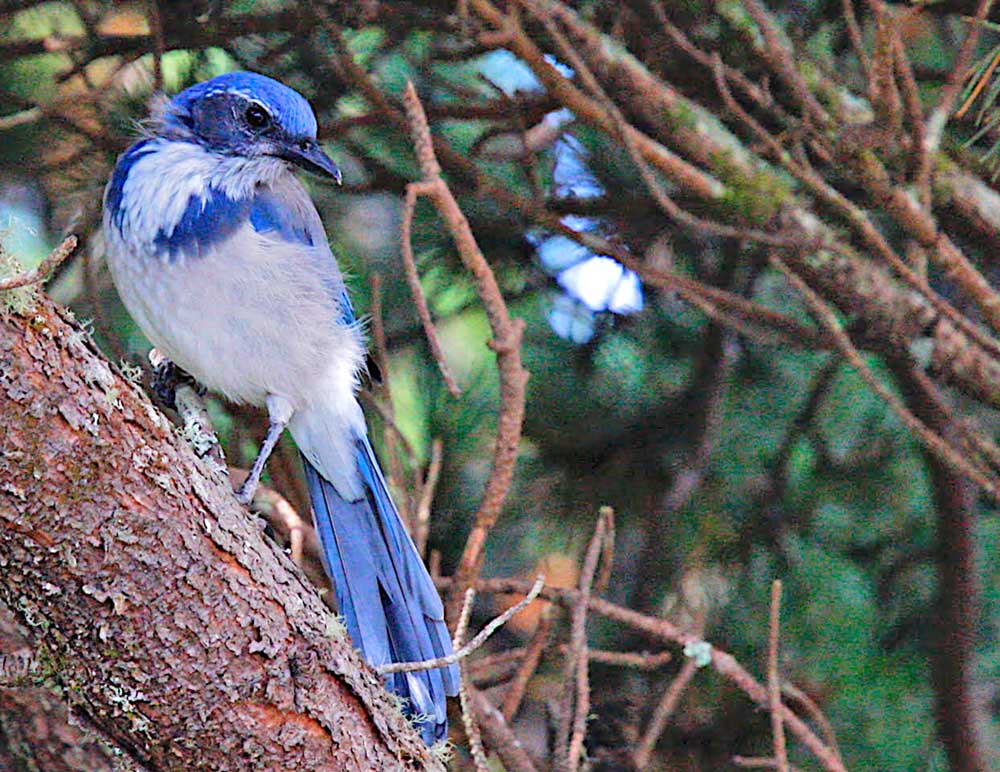Birding: Out with the old and in with the new!
Published 2:05 pm Monday, April 11, 2022

- The scrub-jay we see on the peninsula was renamed the California scrub-jay some time ago now.
Once a year the American Ornithological Association’ classification committee reviews proposals to refine classifications and nomenclature of North and Middle American Birds (also known as the NACC).
Trending
There are six pages of explanation on the ins and outs of why decisions are made. Proposals are received, debated, and then voted on. If a proposal passes, the change is made and then added to the NACC’s list of birds. Sometime afterward, the magazine North American Birds provides a detailed account of the changes that were agreed upon using maps and photos as well as an analysis of the changes.
One of the reasons for changes includes consideration of replacing derogatory or offensive names. One example is the name change for the sea duck that used to be called Old Squaw to the long-tailed duck (AOU, 2000). This long-tailed duck — and it does have a long, pointed tail — is considered occasional to rare in our area.
A species’ range may also result in a name change. Our Pacific wren used to be known as the winter wren. The classification committee agreed with the arguments for change. Winter wren was kept for the migratory eastern species, and Pacific wren created for the mainly permanent species of the West.
Trending
I’m sure you remember the western scrub-jay, which now bears the name California scrub-jay in the West, and the more inland birds are known as Woodhouse’s jays.
More recently — in 2021 — other changes have been made to the birds we see here on the peninsula. The northwestern crow is no longer an individual species but is now lumped with the American crow. It looks like this may be revisited in 2022 so the decision could be reversed to return it to being a separate species. Of course, the decision could also be to keep it lumped into one species with the crow.
Have you seen a short-billed gull? If you have seen a mew gull, which is common in every season but summer in our area, then you have seen a short-billed gull! How can this be? Well, it has to do with another species called the common gull, which breeds in Eurasia and is a casual visitor to the eastern U.S. and Canada, and visits Alaska occasionally. The mew gull was split from the common gull originally. It became the mew gull, but in 2021 the North American species (mew gull) was renamed the short-billed gull.
“This split is based mainly on differences in display vocalizations but also on genetic and other morphological differences outlined in a proposal by NACC member Pamela C. Rasmussen (Michigan State University). American Ornithological Society, 2021” (AOU, 2021). The short-billed gull (formerly the mew gull) breeds in northwestern North America and winters south along the Pacific Coast and into the interior, primarily in the western U.S.
Another change that is based mainly on vocalizations has to do with the barred owl, which is considered uncommon on the peninsula. It is now split into two distinct species. It retains the name barred owl in the U.S. and Canada, while its Mexican counterpart is given the name cinereous owl. This change occurred because it was argued by scientists that vocalizations are very important in the correct identification of these owls.
Changes to the checklist of birds from any area of the world can be confusing and confounding. These changes are not easily kept up with either unless one checks the American Ornithological Association’s annual announcements in their journal (AUK) or in one of the magazines that specializes in birds such as, BirdWatching. Scientists now know more about genetics, the importance, and differences in vocalizations whether it be flight calls or display vocals, range expansions, hybrids, and the like.
I find the changes both challenging and educational, and knowing why is always interesting. The reasons for change are many more than this article mentions. The proposals for change, the debate about the proposed changes and the decisions made are all available on-line. Reading about the out with the old and in with the new is a worthwhile activity for a rainy, blustery day on the Peninsula. I highly recommend it.
Happy birding!









